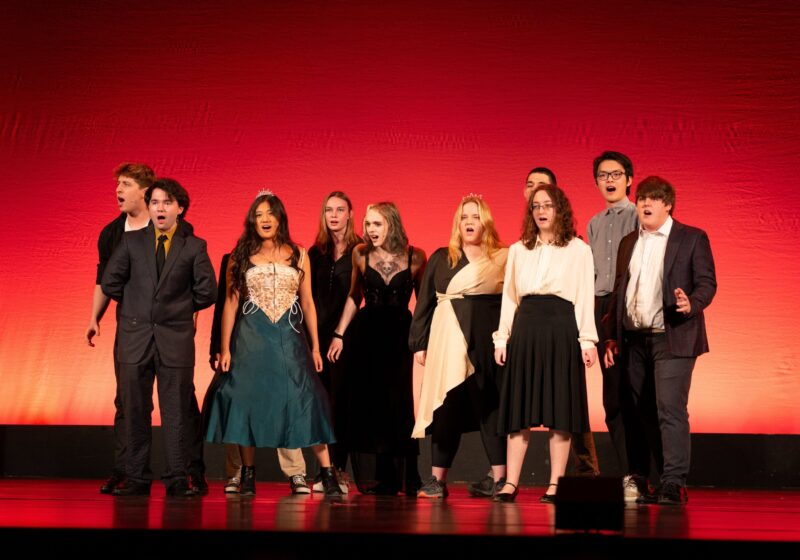Physics professor John Howell and Ph.D student Joseph Choi of UR’s Optics Department developed a new design for a cloaking device, capturing national attention.
By using a set of four lenses, Howell and Choi were able to achieve a system that includes a region where the light coming from one end is bent around and back out the other end. This creates an “invisibility pocket” that can conceal an object from an outside observer. Through the knowledge of how light behaves in air, how light behaves in lenses, and a series of mathematical equations, a functioning cloaking device was achieved.
Professor Howell stated the exact goal that the UR Optics Department achieved.
“We were able to find a system of lenses that exactly replicated light through free space,” Howell said.
The attention has brought the University into the pop-science spotlight. Plastered across social media sites, the “Rochester Cloak” has been compared to Harry Potter’s invisibility cloak. Choi speculated that the comparison to Harry Potter may have arisen from an inconsistency with the use of the word cloak. Howell and Choi’s isn’t the type of cloak that you can wear, however it does hide and conceal.
The intensity of the media attention caught Choi and the rest of the Optics department off guard. Choi said he was surprised to see all of the popularity the cloaking device attracted.
“I think it’s really cool and I’m very happy and very thankful for it,” said Choi. “The Optics department is a great department to be a part of. They have really great training programs and simulation software that really helped for this project.”
The device is a paraxial ray optics cloak and satisfies an equation for what is called the ideal or perfect cloak. The device and the object being cloaked act as air. The light that goes in through the lenses will come out as if there was nothing in the way, providing a clear image of the background behind the object. When they found that the design worked, they tried to simplify it.
The simplest design that they came up with was a four-lens design. By carefully calibrating the power of the lenses with the distances between them, Howell and Choi were able to create a multi-directional cloaking device that works even when viewed from multiple angles.
While refining the concept of creating a cloak using lenses, Choi and Howell ran into a few obstacles. The design was first attempted using cheap lenses. The result was unsatisfactory, and the illusion lacked clarity. This problem was solved using more expensive lenses, called achromatic lenses, which are encased in a special coating. These lenses allow for a clear image of the background, and a successful concealing of the object.
Howell and Choi are still looking into making many improvements. Making the cloak bigger and increasing the range of sight angles from which an object would appear invisible are some of the main goals.
Another problem is seeing the edges and unwanted rays near the edges of the lenses. Choi called it the “edge-effect” and stated that there are ways to minimize this unwanted appearance.
“You just have to customize the lens sizes, and that costs more.”
This project, covered only by departmental funding, opens up opportunities to expound on the current cloak. Howell considers the many changes that could be made to the current system, providing that funding is available.
The idea of cloaking a human is not far from the current Rochester cloak. Simply increase the size of the lenses and other materials, and a human could easily be concealed.
Howell and Choi acknowledged the potential demand for a cloaking device in the real world. Cloaking could be useful for stealth technologies, like hiding satellites or other objects. In addition, the device could also be used for making things on the other side of an object visible. Say there is a large boulder obstructing your view. You could cloak the boulder and see behind it.
Another possible application could be to cloak walls in a building, so instead of having to use windows to see outside there could be lenses that cloak the wall. This would save money in terms of insulation, as it would be possible to have both a solid wall and a view of the outside.
Choi added, “Other things you could do with a cloaking device might include cloaking support posts on signs, like a post on a billboard sign to make it look like it’s levitating.”
Optical Engineering student and sophomore Joseph Linden commented on the Rochester Cloak’s limitations and the released video that is currently circulating.
“I am pretty sure I could design the optical system they filmed,” Linden said.
The device was designed using rudimentary laws of physics and optics, something that has not been widely publicized in the news. Upscaling the device would certainly be possible, but there comes a point where the cloaking device itself would be absurdly large, making it inconvenient and noticeable. The utility of the device is also dependent on the precise angle from which it is viewed.
Linden explained that while the cloak is not perfect, the technology demonstrated by the device has the potential for various real-world applications. He explained the possible use for the device in the medical field. “If a surgeon needs to see through his hands, he may now be able to do that,” Linden said.
“All told,” Linden continued, “I believe that what is shown in the video is probably a simple version of the research project, and the video was made to get attention to the Institute of Optics and the project. And hey, it did that.”
Yarmoff is a member of
the class of 2016.





